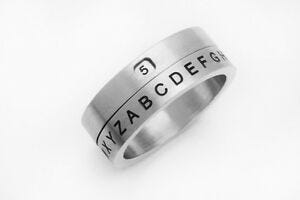Making a Ring

Making a Ring
There was a time before I understood rings in public key methods, and the time after it. I basically allowed me to understand how public key encryption and discrete logs work. Basically, I take a prime number (p), and then use a (mod p) operation, and it creates a ring.
For a ring in encryption, we create can a g value and have a prime number of N. For values of x, we get g^ x (mod N). For example if we use g=2 and N=42:
1 2
2 4
3 8
4 16
5 32
6 22
7 2
8 4
...
40 16
41 32
42 22
43 2
44 4
Notice that we repeat after 42, and start the sequence again with 2, 4, etc. This is the ring. Note that g must work for the ring. With C#, here is the algorithm for working out g, once we have a prime number:
public int getG(int p)
{
for (int i = 2; i < p; i++)
{
int rand = i;
int exp = 1;
int next = rand % p;
while (next!=1)
{
next = (next * rand) % p;
exp = exp + 1;
}
if (exp == p — 1)
return (rand);
}
return (2);
}
Can you try this one:
For a g value of 2 and a prime number of 53, what is the next value in the sequence of 2, 4, 8, 16, 32, 11, …
The answer is 22 (2⁷ mod 53).
Now try the following (it is the 4th question):
Why does this work? Well a (mod p) operation means that we always give a unique output (from 0 to p-1) for all the values of x for 0 to p-1. The (mod p) operation also works for all our arthimetic operations, such as:
(a x b) (mod p) = a (mod p) x (b mod p) (mod p)
If you are interested, here’s a speadsheet to determine the sequence [here]:
